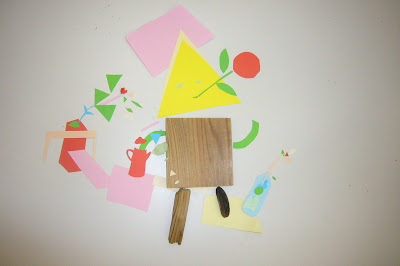Last Sunday we held our first workshop. It was about drawing and plants, playing with them and perhaps understading how they work and live… We made many drawings, like for example one of a minature mermaid…
 Y ya que las sirenas viven en el mar, ¿porque no pretender que el vidrio de la varanda es como el oceano? A lo mejor podemos hacer dibujos que floten en este espacio…
Y ya que las sirenas viven en el mar, ¿porque no pretender que el vidrio de la varanda es como el oceano? A lo mejor podemos hacer dibujos que floten en este espacio…And since mermaids live in the sea, why not pretend that the glass panels in the veranda are like water? Perhaps we can make drawings that float in this space…
También hicimos dibujos de las hojas y de las raíces, y bailamos de contentos con Los Beatles (porque hicimos como que ellos eran el agua y nosotros las plantas). También estaba Wakako, que nos ayudó a comunicarnos con las chicas. Gracias Waka!
We also made drawings of leaves and roots, and we danced of happiness with The Beatles (since we pretended they were the water and we were the plants). Wakako was there as well, helping us to communicate. Thanks Waka!

NEXT SUNDAY 4/5: Building Workshop! at NOW IDeA, from 13:00 to 16:00. Everyone between ages 5 to 10 is welcome. You can email here (in japanese or english) if you'd like to participate.












































